Amidst global resource shortages and increasing environmental pressures, waste recycling has become a critical step in achieving resource cyclical utilization and reducing environmental pollution. Screening, as a core pretreatment and sorting step in the waste recycling process, directly determines the purity of recycled materials, subsequent processing efficiency, and ultimate value. Oscillating screens, with their unique operating principle and superior performance, play an irreplaceable role in the recycling of a wide range of waste types, including plastics, metals, electronic waste, construction waste, and household waste, providing strong support for the efficient development of the waste recycling industry.
Plastic Waste Recycling: Precise Sorting Improves Recycled Material Quality
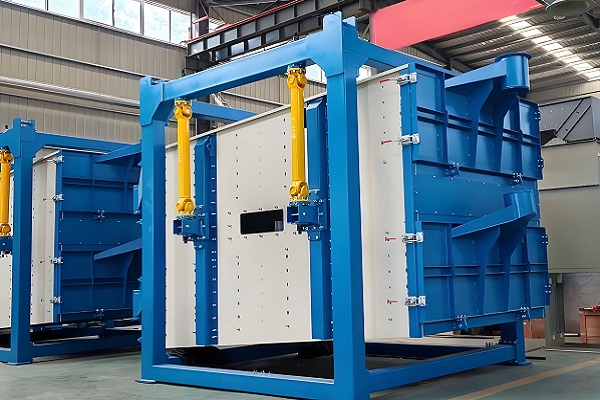
Plastic waste comes from a wide range of sources, types, and forms, including used plastic bottles, plastic film, plastic toys, and industrial plastic scraps. Screening is essential for removing impurities, grading, and sorting the materials during recycling, laying the foundation for subsequent cleaning and granulation processes. Oscillating screens demonstrate significant advantages in this regard. During the pre-processing stage of plastic waste, recycled mixed plastics often contain impurities such as silt, gravel, and metal fragments. If not removed promptly, this can seriously affect the quality of subsequent recycled plastics and even damage pelletizing equipment. A vibrating screen efficiently separates plastic from impurities by adjusting the mesh size and motion parameters. Using a smaller mesh size, impurities such as silt and fine stones can be filtered out of the plastic pellets or fragments, dropping them into the lower hopper. The plastic material then spirals along the mesh surface and is discharged from the outlet, achieving preliminary impurity removal. For example, in the recycling of used plastic bottles, the crushed plastic fragments vary in size and are mixed with bottle label fragments and residual impurities. By properly positioning the mesh, a vibrating screen can first remove fine impurities and then separate the label fragments from the plastic fragments. Because the label is thin and light, the three-dimensional motion of the vibrating screen allows it to pass through the mesh more quickly or be discharged from a specific outlet, ensuring a purity of over 95% for the plastic fragments entering the cleaning process. In the grading and sorting of plastic waste, plastic fragments of different particle sizes correspond to different recycling processing requirements, and different types of plastics (such as PP, PE, and PET) may require further sorting due to differences in density and particle shape even after being crushed. The swing screen can achieve precise grading of plastic fragments by replacing screens with different apertures: the crushed plastic material is separated according to different particle size ranges such as 1-3mm, 3-8mm, and 8-15mm. Fine-particle plastic fragments can be used to produce small precision plastic products, medium-particle fragments are suitable for making daily plastic products, and coarse-particle fragments can be used to process plastic pipes, plates, etc., to meet diverse recycling needs. In addition, for the sorting of mixed plastics, the density difference and the movement characteristics of the swing screen can be combined, and a liner of a specific material can be laid on the screen surface or airflow can be used to assist, so that plastic particles of different densities exhibit different movement speeds and trajectories on the screen surface, thereby achieving preliminary sorting. For example, in the recycling of mixed PE and PET plastics, PE has a lower density and, due to the rocking and oscillating motion of the vibrating screen, moves faster toward the discharge port. However, PET, with its higher density, moves relatively slowly. By setting up different discharge stations, the two plastics can be initially separated, simplifying subsequent, more precise sorting (such as density separation and electrostatic separation).
Furthermore, vibrating screens can effectively address screen clogging in plastic waste recycling. Plastics are somewhat sticky, and traditional vibrating screens are prone to material clogging, especially in humid environments or when handling plastic film fragments, resulting in a sharp drop in screening efficiency. The three-dimensional spiral motion of the oscillating screen causes the material to continuously flip and slide across the screen surface, reducing excessive friction and adhesion between the material and the screen. Combined with an anti-sticking screen, this further reduces the likelihood of screen blockage, ensuring continuous and stable operation, significantly increasing the plastic waste processing capacity. Under equivalent operating conditions, the oscillating screen is 30%-50% more efficient than traditional vibrating screens in processing plastic waste. The screened plastic material is also more uniform, providing high-quality raw material for the subsequent granulation process, significantly improving the mechanical properties and appearance of the recycled plastic.
Metal Waste Recycling: Efficient Impurity Removal and Higher Metal Recovery Rates
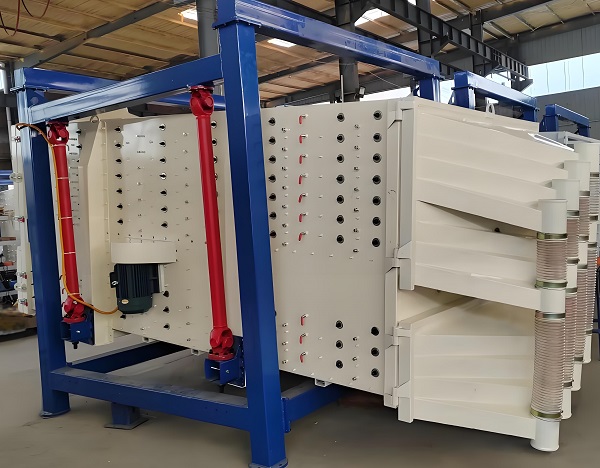
Metal waste recycling encompasses the recycling of scrap steel and non-ferrous metals (copper, aluminum, lead, zinc, etc.). The recycling process requires screening to separate metal from non-metallic impurities, classify metal materials of varying particle sizes, and separate metal scrap from dust. With its precise screening capabilities and stable operating performance, the oscillating screen has become a crucial piece of equipment in metal waste recycling. In the recycling of scrap steel, the steel materials recovered from scrapped cars, construction steel, and industrial equipment are often mixed with non-metallic impurities such as concrete lumps, wood, plastic parts, and rubber gaskets. Furthermore, the steel itself can also produce fragments of varying particle sizes due to crushing. A vibrating screen can select the appropriate mesh size for separation based on the particle size differences between the steel and impurities. For example, when processing scrap steel from crushed cars, a 5mm mesh size can remove impurities such as concrete debris, dust, and fine plastic particles smaller than 5mm, while retaining the steel fragments (mostly larger than 5mm) on the screen surface, completing the initial impurity removal. For steel fragments requiring further classification, a multi-layer vibrating screen can be used. The upper mesh separates large-sized steel lumps (for remelting steelmaking), the middle mesh separates medium-sized steel fragments (for steel castings), and the lower mesh separates small-sized steel chips (for iron powder production or as a steelmaking auxiliary). This achieves a tiered utilization of steel materials and increases their recycling value. In non-ferrous metal recycling, oscillating screens have a more sophisticated application. For example, in the recycling of scrap aluminum products, recycled aluminum pots, aluminum profiles, and aluminum foil, after crushing, produce aluminum particles and aluminum powder of varying sizes, mixed with surface coating debris, oxide layer powder, and plastic impurities. If directly smelted, these impurities will enter the molten aluminum, reducing the purity of the recycled aluminum and affecting product quality. Oscillating screens enable efficient sorting using two screen layers: the upper screen, with an 8mm aperture, separates larger aluminum particles and incompletely crushed aluminum lumps, which can be directly fed into the furnace for smelting. The middle screen, with a 2mm aperture, separates medium-sized aluminum particles for use in aluminum alloy die-castings. The lower screen collects aluminum powder and fine impurities. Subsequent airflow separation or magnetic separation further separates the aluminum powder from the impurities, allowing the aluminum powder to be recycled. Furthermore, in the recycling of scrap copper cables, the copper wire processed by the wire stripping machine is often mixed with plastic sheathing debris. By adjusting the motion parameters and mesh size, the oscillating screen can exploit the density and morphology differences between the copper wire and the plastic debris to remove the plastic debris, ensuring copper wire purity exceeding 98% and significantly improving copper recovery rates.
Notably, metal waste is characterized by high hardness and density, placing high demands on the wear resistance and structural stability of the screening equipment. The oscillating screen utilizes high-strength steel plate for the screen body, and key components such as the main shaft and bearings are made of wear-resistant alloy materials. Combined with precision machining, the oscillating screen can withstand the impact and friction of metal materials, ensuring long-term damage resistance. Furthermore, its low amplitude and low speed motion reduces wear on the screen mesh, extending its service life and reducing equipment maintenance costs, ensuring stable operation in the demanding environment of metal waste recycling.
E-waste Recycling: Fine Sorting Facilitates Efficient Resource Extraction
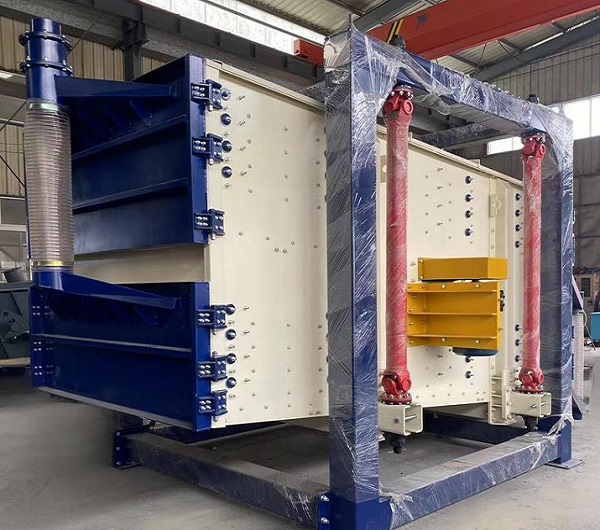
E-waste (such as used mobile phones, computers, televisions, and printers) has an extremely complex composition, containing a variety of materials, including metals (gold, silver, copper, iron, and aluminum), plastics, glass, rubber, and circuit boards. Precious metals (gold, silver, and palladium) possess extremely high recycling value, but their concentrations are low and their distribution is dispersed. Therefore, precise screening and sorting are required to effectively separate and extract these various resources. Oscillating screens play a key role in this process.
During the post-crushing and screening stage of e-waste, after coarse and fine crushing, the e-waste forms a mixture of metal particles, plastic fragments, glass shavings, and circuit board powder. Oscillating screens are then used for multi-stage screening to achieve a preliminary separation of these different components. For example, when processing scrap circuit boards, the shredded material contains metal particles (such as copper particles and metal debris with gold powder attached) that differ in size from plastic and glass particles. A vibrating screen can perform this classification using three screen layers: the upper screen (5mm aperture) separates incompletely crushed circuit board fragments, which are returned to the crusher for further crushing. The middle screen (2mm aperture) separates larger copper and plastic particles, which can then be further separated through density sorting (such as gravity separation). The lower screen (0.5mm aperture) separates fine metal powder (including precious metals such as gold and silver) from plastic and glass powder. Airflow or electrostatic separation is then used to separate the precious metal powder from the other powders, providing high-purity raw materials for subsequent precious metal extraction processes (such as chemical dissolution and electrolytic refining).
For the advanced separation of plastics and metals in electronic waste, a vibrating screen can be integrated with other sorting equipment to form a coordinated system, improving sorting efficiency and accuracy. For example, in the recycling of used computer systems, the disassembled and shredded materials are first fed into a vibrating screen to remove fine dust and impurities. The oversize material (primarily plastic casing and metal component fragments) is then fed into a secondary screening process. By adjusting the screen aperture and the equipment speed, plastic fragments (thinner and denser) are forced to pass through the screen more quickly or be discharged through a specific outlet, while metal fragments (thicker and denser) remain on the screen surface, achieving initial sorting. The sieved plastic fragments are then passed through the vibrating screen again for classification and reuse in different plastic recycling processes. The metal fragments are then fed into magnetic or eddy current separation equipment to separate ferromagnetic and non-ferromagnetic metals, completing the refined recycling of resources.
Furthermore, electronic waste recycling places high demands on the environmental performance of screening equipment, as the shredding process easily generates dust and harmful gases, which can cause secondary pollution if not handled properly. The oscillating screen features a fully sealed design, equipped with a sealed cover and dust removal interface. It can be connected to the workshop's dust removal system to collect and treat dust generated during the screening process, preventing it from spilling out. Its low operating noise (≤75 decibels) improves the working environment in e-waste recycling workshops, meets environmental and occupational health requirements, and ensures green e-waste recycling.
Construction and Domestic Waste Recycling: Grading and Processing to Promote Solid Waste Resource Utilization

Construction and domestic waste are the primary components of municipal solid waste. Construction waste includes concrete blocks, bricks, sand and gravel, and rebar, while domestic waste encompasses a variety of components, including kitchen waste, paper, plastic, glass, and metal. Sorting, classifying, removing impurities, and separating these two types of waste is a key step in promoting their resource utilization. Oscillating screens, with their wide range of material adaptability and large processing capacity, play a vital role in recycling both types of waste.
In construction waste recycling, oscillating screens are primarily used to classify crushed materials and separate impurities. After construction waste is crushed by jaw crushers and impact crushers, it produces recycled aggregates (concrete aggregate, sand and gravel aggregate) of varying particle sizes, mixed with impurities such as steel scraps, wood, and plastic fragments. The oscillating screen uses multiple layers of screens to separate the recycled aggregates: the upper screen (31.5mm aperture) separates super-coarse aggregate (used for roadbed filling and precast concrete blocks), the middle screen (16mm aperture) separates medium-coarse aggregate (used for concrete mixing and wall construction), and the lower screen (5mm aperture) separates fine aggregate (used for mortar preparation and floor leveling). These recycled aggregates of varying particle sizes correspond to different applications, effectively turning waste into treasure. During the screening process, steel scraps, due to their larger size and higher density, remain on the upper screen and can be separated and recovered manually or through magnetic separation equipment. Lighter impurities such as wood and plastic fragments are discharged through a specific outlet as the material moves, further enhancing the purity of the recycled aggregate. For example, after introducing a vibrating screen at a construction waste treatment plant, the screening efficiency of recycled aggregate increased by 40%, and the impurity content dropped from 15% to below 3%. This significantly increased the utilization rate of recycled aggregate, not only reducing the amount of construction waste going to landfill but also providing the construction industry with a high-quality recycled resource, reducing its reliance on natural sand and gravel.
In domestic waste recycling (especially recyclable sorting), vibrating screens are commonly used for pre-treatment and sorting of recyclables. Currently, domestic waste is mostly collected and sorted using a "separated collection - centralized sorting" model. Recyclables still contain kitchen waste residues, dust, and non-recyclable debris, requiring screening for initial removal of impurities. The oscillating screen can be selected based on the shape and particle size of the recyclables. For example, when processing mixed recyclables, a 10mm mesh can remove impurities such as food waste and fine dust, while retaining recyclables such as paper, plastic bottle fragments, and metal can fragments. Subsequently, by adjusting the oscillating screen's motion parameters, paper (which is light and slippery) can be separated from plastics and metals. Paper will be discharged more quickly from one side of the screen and enter the paper recycling line, while plastics and metals will be discharged from the other side for further separation in subsequent sorting equipment. Furthermore, in the recycling of fly ash from municipal waste incineration, the ash contains heavy metals and salts, requiring screening to achieve particle size classification. This facilitates subsequent stabilization and resource recovery (such as salt extraction and metal recovery). The oscillating screen can finely adjust the mesh size to classify the fly ash by particle size, ensuring accuracy in subsequent processing steps.
Advantages of Oscillating Screens in Waste Recycling
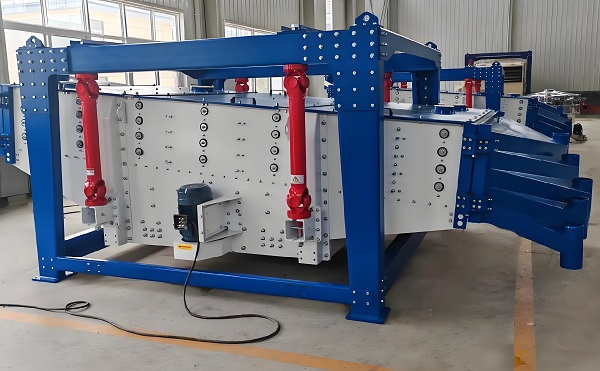
Compared to traditional screening equipment (such as vibrating screens and drum screens), oscillating screens offer significant advantages in waste recycling, primarily in the following three aspects:
First, high adaptability and low clogging rates. Waste recycling materials are complex and diverse in composition and form, ranging from hard metals and concrete to sticky plastics and kitchen waste, as well as thin paper and film. Traditional screening equipment is prone to clogging and uneven screening due to these differences in material properties. The oscillating screen's three-dimensional spiral motion continuously rotates and disperses the material on the screen surface, reducing the chance of material agglomeration and screen clogging. Furthermore, the screen material (such as wear-resistant steel or non-stick nylon) and aperture can be adjusted to suit the characteristics of the waste, meeting diverse screening needs and ensuring stable operation in various waste recycling scenarios.
Second, high-precision screening and high recovery efficiency. Waste recycling requires high screening accuracy. Incomplete screening can lead to the loss of recyclable materials or the introduction of impurities, reducing the recycling value. By extending the material's path across the screen, the swing screen increases the contact time between the material and the screen, enabling precise separation of materials of varying particle sizes and properties, achieving a screening accuracy exceeding 95%. Furthermore, its throughput per unit time is 1.5-2 times higher than that of traditional vibrating screens, enabling rapid processing of large volumes of recycled waste, reducing material backlogs and improving the efficiency of the entire recycling line.
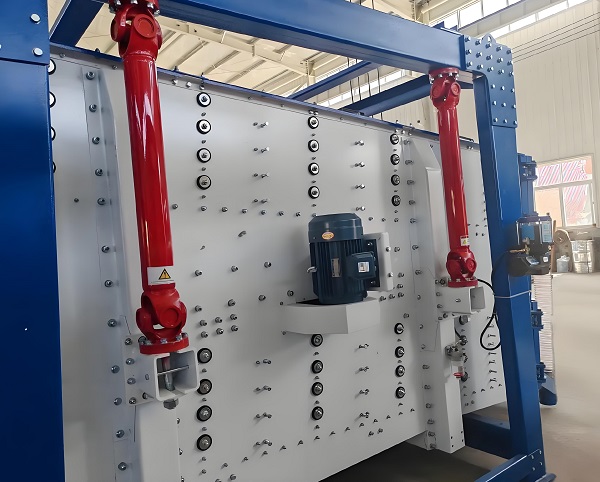
Third, it offers environmental protection, energy savings, and low maintenance costs. The waste recycling industry prioritizes environmental protection and cost control. The swing screen utilizes a low-power motor drive, consuming 40% less energy than traditional equipment, significantly reducing energy costs over long-term operation. Its fully sealed design and low-noise operation (≤75 decibels) meet environmental and occupational health requirements, preventing secondary pollution. Furthermore, its compact structure and low-wearing parts.
With its unique performance advantages, the swing screen has achieved efficient application in a variety of waste recycling scenarios, including plastics, metals, electronic waste, construction waste, and domestic waste. It not only solves the screening problem in waste recycling, but also improves the purity and value of recycled materials, and promotes the waste recycling industry to develop in a more efficient, refined, and green direction. With the continuous upgrading of waste recycling technology, the swing screen will be further optimized and innovated, playing an even more important role in the field of resource recycling.
Save Time! Get A Detailed Quotation Quickly.
